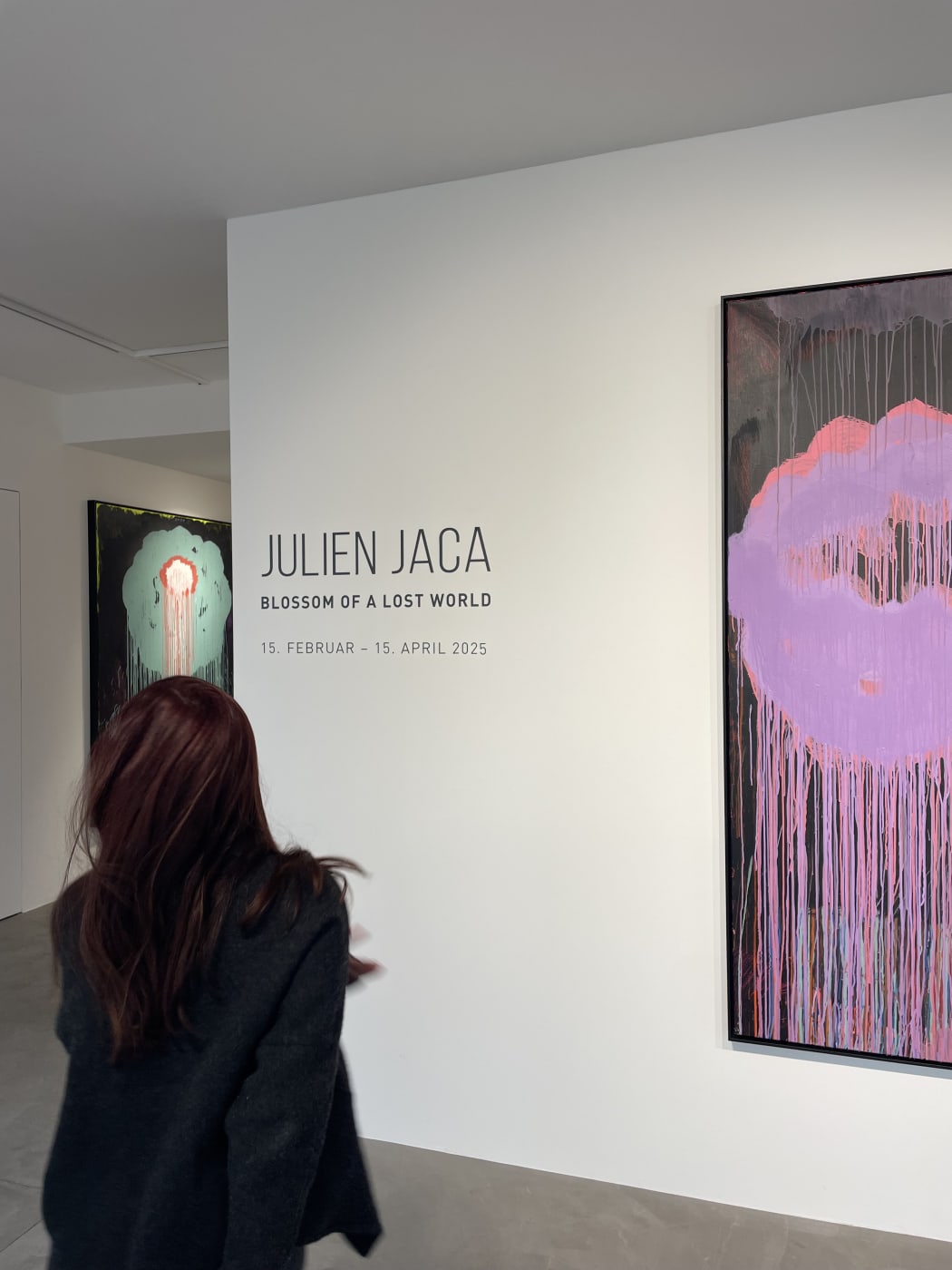-

Julien Jaca’s Flowers Bloom from the Abyss
by Katherina ZeifangAt first glance, the paintings in Blossom of a Lost World, Julien Jaca’s latest exhibition at PULPO GALLERY, might seem familiar—bold floral compositions, alive with drips and gestural urgency. But these are not flowers as we know them; they are not gentle, nor merely decorative. They do not simply represent beauty—they contend with it. In Jaca’s hands, the act of painting becomes a push and pull between luminosity and darkness, creation and erasure, exuberance and loss.Jaca, who has a background in tattooing and a deep engagement with materiality, speaks of his process as an exercise in both control and surrender. He begins each painting with a layer of bright color, only to cover it in black. The flowers are built up through sweeping, instinctual strokes, often applied with brushes affixed to long sticks—a deliberate mechanism that forces abstraction into the process. “I don’t know how a painting will end when I start it,” he says, reflecting on the improvisational nature of this series. “The gestures, the accidents, the layers—they guide me.”That unpredictability manifests in surfaces that feel charged with tension. The paintings vibrate between layers, revealing histories of earlier marks buried beneath dark washes, as if each work is a palimpsest of its own making. Drips cascade down the canvas, sometimes resembling rain, sometimes tears. “Not flowers, but the idea of them,” Jaca muses—a phrase that could serve as both an aesthetic principle and an existential stance.If Cy Twombly’s Roses evoke a poetic meditation on time and memory, Jaca’s floral forms feel more volatile, more urgent. They arrive from somewhere raw, built through cycles of assertion and obliteration. And yet, despite—or perhaps because of—this struggle, the paintings feel deeply alive.Scale plays a crucial role. The six-meter painting Los Angeles Tears dominates the gallery’s back wall, a monolithic presence that consumes the viewer’s field of vision. Jaca describes how, while making it, he was aware of the devastating wildfires sweeping through Los Angeles, a city he deeply loves. “At first, I saw the drips as rain—the rain LA needed,” he recalls. “But by the end, they felt more like tears.” The piece, like much of his work, oscillates between destruction and renewal, grief and hope.Jaca’s influences span generations and genres. Early in his career, he was drawn to folk traditions, outsider art, and the meticulous precision of tattooing. Over time, his interests shifted toward the muscular physicality of contemporary abstraction—artists like Sterling Ruby, Rashid Johnson, and Oscar Murillo, who share his preoccupation with materiality and scale. “When looking back doesn’t interest you anymore, you’re doing something right,” he says, quoting an anonymous phrase that feels particularly apt for his practice. His work carries echoes of these figures, yet it resists easy categorization. It is, above all, a record of process—of wrestling with paint, of testing the limits of gesture, of reaching for something beyond the purely visual.In a world where uncertainty has become the norm, Jaca’s paintings don’t offer simple reassurances. Instead, they ask us to sit within contradiction, to acknowledge beauty without ignoring the specter of loss. The curatorial statement accompanying the exhibition describes the flowers as symbols of resilience, their vibrancy emerging from darkness. And yet, they are also reminders of ephemerality, their presence always on the verge of disappearance.If Blossom of a Lost World marks anything, it is not an endpoint but an evolution. Jaca hints at what’s next—larger canvases, an even deeper embrace of abstraction, a move toward other materials. The small painting Harvest Sky, with its luminous orange background, was created as a bridge to his future work. “Maybe it’s time to bring more light in,” he reflects.Wherever that leads, Jaca’s paintings will likely continue to insist on this fragile balance: between beauty and brutality, between what is fleeting and what endures. They are, in the end, not just about flowers, or even about painting itself. They are about the act of making meaning in a world that is constantly shifting beneath our feet.
Join our newsletter
* denotes required fields
We will process the personal data you have supplied to communicate with you in accordance with our Privacy Policy. You can unsubscribe or change your preferences at any time by clicking the link in our emails.
